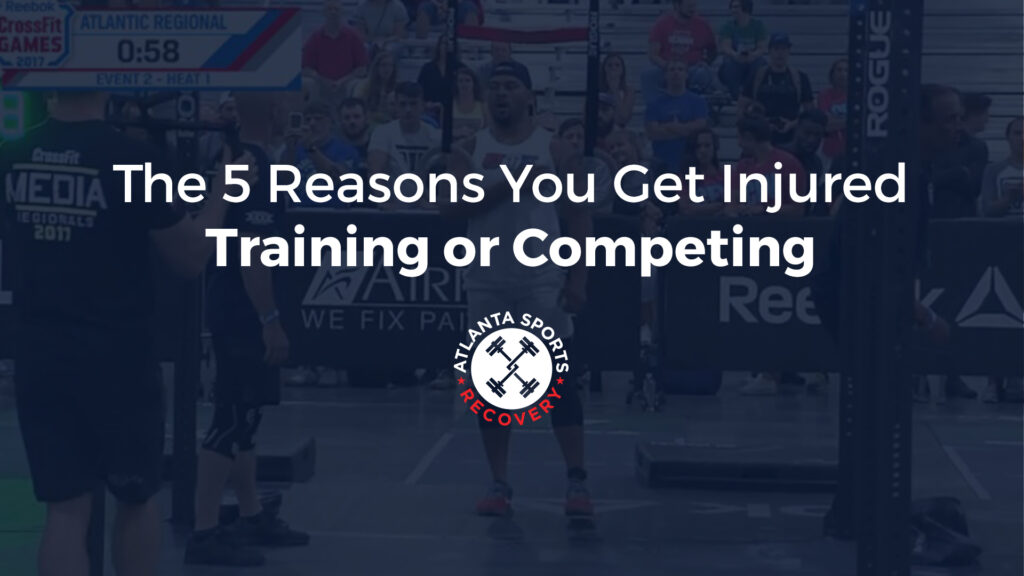When you squat, have you ever felt a sharp pinch in the front of your hip? Maybe you get a weird, deep ache around your hip flexor and groin after you run. Or you may notice it when you bend down to grab your laundry. These pains are most likely the effects of a femoroacetabular impingement (aka FAI or hip impingement). This painful condition of the hip can disrupt your workout or training routine and your daily living activities. For years, sports medicine and PT clinics have struggled to treat FAIs. Usually, treatment is a steroid shot, mini band exercises, and the runner’s stretch. All of them fail miserably to provide relief.

Because we work with many CrossFitters, this injury is widespread in CrossFit; ASR has developed our system to eliminate pinchy pain and keep people moving.
This week, we wanted to tell you more about our approach.
The first thing you need to know is that there are two types of hip impingement, and the first thing we do is assess to determine which type it is.
If you have a type I – –structural (cam or pincer impingement) caused by bony growth limiting the range of motion at the hip, we do the following.
- Optimize the range of motion at the hip despite the bony growth via exercises like a posterior hip capsule mobilization and long-axis hip distraction.
- Optimize the available range of motion at the joints around the hip. For example if you are CrossFitter getting a pinch during squats we will improve your ankle mobility and change your squat biomechanics so you can get depth without irritating the hip.
- We perform an activity-specific assessment of your movement patterns. The evaluation allows us to create additional strength treatment and mobility strategies to decrease symptoms rapidly while keeping you in the game. For a runner, this means performing a treadmill gait analysis. For a CrossFit athlete, this means analyzing their squats, deadlifts, Olympic lifts, etc.

Often, we hear other practitioners say that surgery is the only option to fix a bony hip impingement, but recent research questions about the effectiveness of FAI surgeries.
If you have a type 2 functional FAI – caused by poor joint stability- we treat it this way.
- Stop stretching the hip flexors and start strengthening them. The hip flexors stabilize the front of the hip (where you feel the stretch), and trying to lengthen them makes the problem worse if you have a type 2 impingement.
- We make your hip work like a hip throughout its range of motion through exercises like CARs (controlled articular rotations) and joint and soft tissue manual therapy, such as joint mobilizations and ART.
- We look at your biomechanics in whatever movement causes the problem to see if a pattern is putting too much load into the irritated tissues, creating the problem.
This process has fixed over 100 cases of hip impingement in the last four years, often in people whose ortho has told them to quit running or CrossFit.
Ready to get your life back?
At ASR, treating FAI’s is one of our specialties! We’re just as tired as you are of the mismanagement of this condition and seeing people suffer for years without relief. We’d love to team up with you to regain your freedom! If you need help with hip impingement, schedule an appointment today with our sports med team members to get on the road to recovery.



